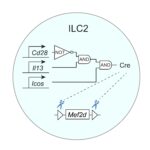About Us
The MRC Laboratory of Molecular Biology (LMB) is a research institute dedicated to the understanding of important biological processes at the levels of atoms, molecules, cells and organisms. In doing so, we provide knowledge needed to solve key problems in human health.
Our scientists tackle fundamental, often difficult and long-term research problems. The LMB has made revolutionary contributions to science, such as pioneering X-ray crystallography and electron cryo-microscopy (cryo-EM) to determine protein structures, the sequencing of DNA and the development of monoclonal antibodies. Twelve Nobel Prizes have been awarded for work carried out by LMB scientists.
The LMB also promotes the application and exploitation of our research findings, both by collaboration with existing companies and the founding of new ones, helping to advance medical research and the translation and application of knowledge.
The LMB provides an unsurpassed environment for both young and established researchers, with state-of-the-art facilities and a unique scientific culture. The LMB has always been very diverse, with a truly international outlook. We currently employ men and women from over 50 countries, and LMB alumni work in research organisations across the world.
Insight on Research
Motion detector in the brain translates visual information into movement

Marco Tripodi’s group, in the LMB’s Neurobiology Division, reveals how visual information is progressively channelled to motor neurons.
Transcription factor Mef2d is crucial to the function of type-2 innate lymphoid cells during allergic responses

Andrew McKenzie’s group, in the LMB’s PNAC Division, have applied a new screening system and synthetic Boolean logic gate circuits to offer unprecedented insights into the molecular regulation of type-2 innate lymphoid cells, a key contributor to allergic responses.
Quick Links
Latest News
 Diverse career stories at the fifteenth LMB-Cambridge AWiSE event
Diverse career stories at the fifteenth LMB-Cambridge AWiSE eventAlumnae Teresa Thurston, Soudabeh Imanikia and Beth Thompson returned to the LMB as speakers at this year’s ‘What Next for Your Career’ event, each offering insights to making career decisions. […]
 Celebrating Pride in rainbow lab coats
Celebrating Pride in rainbow lab coatsA cohort of LMB staff recently marched in Cambridge Pride, celebrating equality, diversity and inclusion throughout the fields of STEMM. […]





